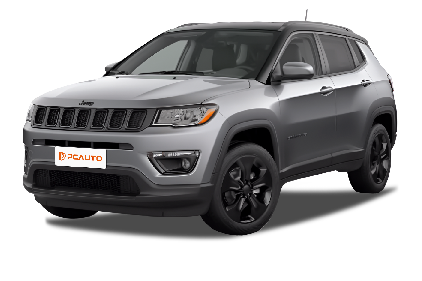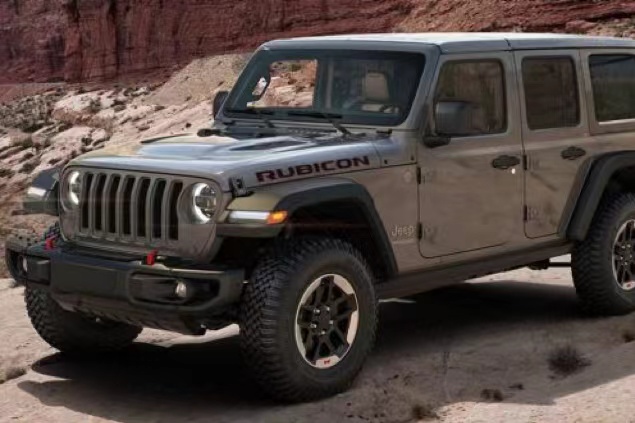Q
How about the fuel comsumption of Jeep Compass?
The 2.4L Jeep Compass runs on gasoline, with actual fuel consumption influenced by various factors including driving style and road conditions. This vehicle is equipped with a 2.36L naturally aspirated engine delivering a maximum output of 172PS.
When driving aggressively with frequent acceleration and braking - such as in congested urban areas where the engine requires more energy to maintain operation - its fuel consumption will be notably higher. Conversely, maintaining good driving habits on smooth highways typically results in relatively lower fuel consumption.
With a 51L fuel tank capacity, the actual driving range can be calculated based on actual fuel consumption. Overall, it's difficult to say whether Jeep Compass has high or low fuel consumption- a proper assessment requires consideration of specific usage scenarios.
Special Disclaimer: This content is published by users and does not represent the views or position of PCauto.
Related Q&A
Q
Is the Jeep Compass engine powerful?
The Jeep Compass 2.4 Limited (2014) is equipped with a 2.4L naturally aspirated inline-four engine that delivers 172 horsepower at 6000 rpm and a peak torque of 224 Nm at 4400 rpm. Whether an engine is powerful enough depends on individual needs and expectations. For urban commuting and light off-road driving, this engine provides adequate power for smooth acceleration and overtaking. It is paired with an automatic transmission and an all-wheel drive system, ensuring stable performance across various road conditions. However, if you seek high-performance driving with rapid acceleration and high top speeds, this engine may not meet those expectations. Overall, it strikes a good balance between daily usability and light adventure capabilities.
Q
What is the maximum range of the Jeep Compass?
The Jeep Compass 2.4 Limited (2014) has a fuel tank capacity of 51 liters. However, its maximum range depends on various factors such as driving habits, road conditions, and vehicle load. With a 51-liter fuel tank, under ideal conditions with efficient driving, it can achieve a long range, but the actual range often varies. For example, if the vehicle averages around 10 liters per 100 kilometers (this is just an estimate as actual consumption may differ), it could travel approximately 510 kilometers on a full tank. Regular maintenance like proper tire inflation, timely oil changes, and efficient engine tuning can also improve fuel efficiency and increase the maximum range. Keep in mind these are approximations and the actual maximum range may fluctuate.
Q
How much does it cost to fill up Jeep Compass?
The Jeep Compass has a fuel tank capacity of 51 liters. However, the actual cost to fill it up depends on current fuel prices. Gasoline prices fluctuate - taking standard RON 95 as an example, if its price is RM 2.20 per liter, a full tank would cost approximately RM 112.20. For RON 97 priced at RM 2.50 per liter, filling the tank would require RM 127.50.
Fuel consumption varies significantly based on driving habits and road conditions. Proper driving habits and favorable road conditions can improve fuel efficiency, reducing refueling frequency and costs. Conversely, aggressive driving and challenging terrain increase fuel consumption, leading to higher refueling expenses.
Q
Does Jeep Compass have a spacious room?
The room of Jeep Compass is spacious. With a length of 4404mm, width of 1760mm, height of 1656mm and wheelbase of 2634mm, it provides an ample space inside. The five-seat layout means there's enough room for a small family. The front seats offer manual adjustability for the driver and passenger, and the passenger seat has features like tumble-fold and heating. The rear seats can be split 60:40, which not only gives flexibility for seating arrangements but also allows for more cargo space when needed. The trunk has a volume of 458L, which is sufficient for daily groceries or a couple of suitcases for a short trip. Also, features like a single sunroof increases the sense of spaciousness and airiness inside the vehicle, making the Jeep Compass a good choice for those seeking a vehicle with adequate space.
Q
Is the Jeep Compass SUV or XUV?
The Jeep Compass is a compact SUV that has the typical features of an SUV. It has elevated ground clearance that enables it to easily handle challenging terrains with better passability than conventional sedans. Its interior offers adequate space, providing ample room for both passengers and cargo to meet the consumers' needs for daily commutes and family travel.
In design, it carries forward Jeep's iconic DNA with the classic seven-slot grille paired with distinctive headlights, complemented by muscular body lines. For the hood, it offers a range of powertrain options including gasoline engines, as well as electrified variants like mild-hybrid, plug-in hybrid, and all-electric versions to cater to consumers'diverse preferences.
Some models are equipped with an intelligent 4WD system, delivering off-road performance—all of which align with authentic SUV traits rather than the XUV.
Q
What type of vehicle is the Jeep Compass?
The Jeep Compass is a compact SUV that belongs to the Jeep family. With a body length of 4,404mm, width of 1,760mm, height of 1,656mm, and a wheelbase of 2,634mm, its dimensions secure its position in the compact SUV segment. For the hood, it once offered a 2.4L naturally aspirated engine version producing 172PS maximum horsepower, sufficient for daily driving needs.
In terms of features, the vehicle is equipped with numerous practical and comfort-oriented configurations. In safety, it includes six standard airbags, electronic stability control, hill start assist, etc. The front seats offer manual adjustment, supporting heating functionality, while the rear seats feature a 60:40 split-folding capability for flexible cargo space expansion. Additionally, the multifunction steering wheel and 6.5-inch touchscreen infotainment system further enhance the driving experience.
With these characteristics, the Jeep Compass is suitable for both daily commutes and outdoor adventures, which is a good choice for consumers.
Q
How far can an empty-fuel Jeep Compass travel?
It's difficult to determine exactly how far an empty-fuel Jeep Compass can travel, as this depends on various factors like driving style, road conditions, and vehicle load. The 2014 Jeep Compass 2.4 Limited has a 51-liter fuel tank, with actual fuel consumption varying between drivers - typically ranging from 11 to 15 liters per 100 kilometers.
Assuming approximately 10 liters of fuel remain when the warning light activates (this is a rough estimate and varies by vehicle), at a consumption rate of 12 liters per 100 km, the theoretical remaining range would be around 80 kilometers. However, this is only an estimate. In practice, to avoid potential fuel pump overheating damage because of insufficient cooling, which may even cause the breakdown of vehicle, it's strongly recommended to refuel the vehicle as soon as possible after the warning light illuminates.
Q
Which country does Jeep Compass come from?
The Jeep Compass is an American brand. Jeep is an automotive brand with a profound historical heritage and is affiliated with Chrysler Corporation in the United States. This brand is renowned worldwide for producing off-road vehicles with outstanding performance. As a member of the Jeep family, the Jeep Compass inherits the brand's unique features. It combines classic design with modern technology, featuring iconic exterior elements of the Jeep brand such as the seven-slot grille and a series of advanced configurations, such as the available Freedom Drive active full-time 4WD system, which enhances its on-road stability and off-road capability. In Malaysia, many consumers favor the Jeep Compass, as it offers unique and distinctive options for local SUV buyers.
Q
What is the fuel capacity of Jeep Compass?
The fuel capacity of the Jeep Compass is 51 liters, which helps improve the driving range. The fuel tank capacity refers to the volume from the bottom of the fuel tank to the safe fill level. In actual refueling, it may exceed the calibrated value because there is still space from the safe fill level to the fuel tank opening, which is to prevent fuel overflow due to thermal expansion. This vehicle runs on gasoline, and its fuel consumption per 100 kilometers fluctuates within a certain range. Understanding the fuel capacity is important for trip planning. For example, before a long-distance trip, check the remaining fuel level and plan refueling stops in advance. During daily use, it is also recommended to monitor the remaining fuel level through the vehicle's fuel gauge and refuel the vehicle promptly when the level is low to avoid travel disruption due to fuel depletion.
Q
Is Jeep Compass the full-size car?
Jeep Compass is not the full size car. It is a compact SUV, categorized into the C-Segment. With a length of 4404mm (for the 2014 model) and a wheelbase of 2634mm, its dimensions make it a compact vehicle. Full size cars or SUVs typically have larger dimensions, offering more spacious interior, especially in terms of passenger room and cargo capacity. However, over the years, the Compass has undergone upgrades. The newer versions have increased in size, with a length reaching 4550mm and an extended wheelbase of 2795mm, which also boosts the cargo space to 550L. This evolution makes it more spacious than before, yet still within the category of compact vehicle.
Popular Cars
Model Year
Car Compare
Car Photo
Latest Q&A
Q
How reliable is a 2019 Porsche Macan?
The 2019 Porsche Macan delivers solid reliability, thanks to its proven 2.0T or 3.0T engines that offer consistent power delivery. The PDK dual-clutch transmission is another strong point—it’s both durable and buttery-smooth.
Porsche’s sporty DNA shines through in the Macan’s chassis tuning and all-wheel-drive system, yet it doesn’t compromise everyday comfort. Owner feedback suggests that sticking to the factory maintenance schedule keeps most examples running trouble-free, though be prepared for higher upkeep costs (as with any luxury vehicle).
Its strong resale value speaks volumes about its reputation for dependability. If you’re after driving thrills without sacrificing SUV practicality, the 2019 Macan is a compelling pick. Just be sure to get a pre-purchase inspection and verify full service history—it’ll pay off in the long run.
Q
How much is a 2019 Porsche worth?
The value of a 2019 Porsche depends on the model, mileage, condition, and specs. Take the popular Cayenne, for example—used ones typically go for between RM300k to RM500k. A 911 Carrera might range from RM500k to RM800k, while an entry-level 718 Boxster or Cayman could be around RM250k to RM400k. For luxury sedans like the Panamera, expect prices between RM350k to RM600k, but always check the actual condition and option list.
Porsches hold their value well, especially limited editions or high-performance GT models, but maintenance costs and service history play a big role in resale pricing. If you're buying, stick to official certified pre-owned channels or get a professional inspection. Always verify warranty transfers and repair records.
Pro tip: Compare listings on local used-car platforms and check recent sales data—market demand and inventory fluctuations affect pricing. Also, factory options (like sport packages or premium audio) can boost resale value, while accident history or multiple owners might slash the price by 10-20%.
Q
Does the 2019 Macan have a good sound system?
The 2019 Porsche Macan delivers an impressive audio performance, particularly with the optional Bose® Surround Sound System or the top-tier Burmester® High-End Surround Sound System—both offering an immersive listening experience.
The Bose® setup packs 14 speakers with 665 watts of total power, delivering crisp audio and punchy bass perfect for pop and electronic music. Meanwhile, the Burmester® system steps it up with 16 speakers and 1,000 watts, creating a wider soundstage and superior detail reproduction—ideal for classical or high-resolution tracks.
Both systems integrate seamlessly with Porsche’s standard Communication Management (PCM), supporting Apple CarPlay and multiple audio sources. If sound quality is a priority, be sure to specify your audio preference at purchase—the base model only comes with a standard speaker setup.
For the best performance, play lossless files via USB or high-quality Bluetooth codecs, and keep the system firmware updated for optimal operation.
Q
What is the resale value of a 2019 Macan?
The resale value of a 2019 Porsche Macan depends on factors like condition, mileage, specs, and service history. Current used prices hover between RM250k to RM350k, with higher trims commanding premium prices. As Porsche's entry SUV, the Macan holds its value better than most rivals thanks to brand prestige and sporty DNA – especially models optioned with Sport Chrono or full leather interiors fetching stronger money.
Pro tip: Get a pre-sale inspection and organize your maintenance paperwork – this really helps maximize resale. Macans move quickly in our local used market, with 3-5 year-old examples being the sweet spot when depreciation levels off. If you're upgrading, consider Porsche Approved Certified pre-owned – you'll pay a slight premium over private sales, but the extended warranty and factory refurbishment save headaches down the road.
Q
Is a 2019 Porsche Macan a good car?
The 2019 Porsche Macan is a well-rounded luxury SUV that stays true to Porsche's performance DNA while delivering everyday practicality. It comes with your choice of a peppy 2.0T or more powerful 3.0T engine, paired with Porsche's brilliant 7-speed PDK transmission that shifts like butter. The chassis strikes that sweet spot between sporty handling and comfortable cruising - perfect for both city commutes and weekend backroad blasts.
Inside, you'll find Porsche's typical top-notch craftsmanship with a standard 10.9-inch touchscreen featuring Apple CarPlay. Just don't expect limo-like rear legroom. These things hold their value surprisingly well, though maintenance will cost you more than your average SUV - but then again, you get Porsche's excellent service network.
Among its competitors, the Macan stands out for its driver engagement. If you want more grunt, step up to the Macan S or GTS. One pro tip: if you're shopping used, pay special attention to the PDK's condition and inspect the suspension components. Always better to go through Porsche's certified pre-owned program for that extended warranty peace of mind.
View More



















Pros
Cons